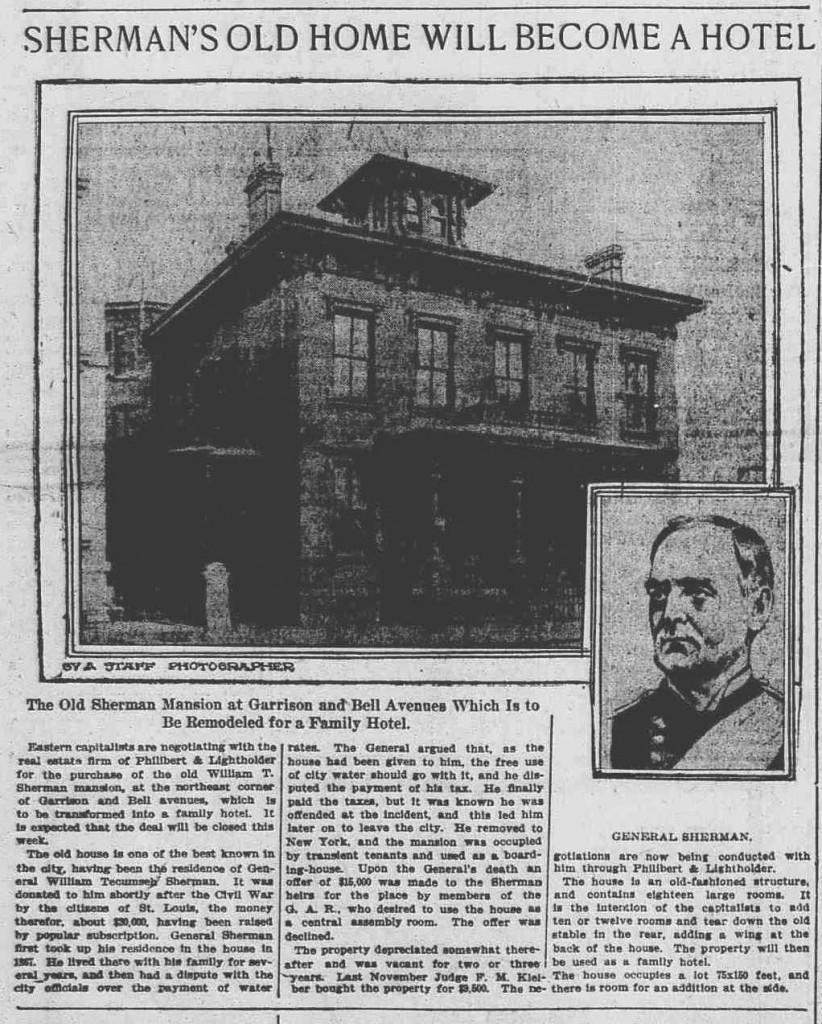General Sherman’s St. Louis Home
General William Tecumseh Sherman of Civil War fame had deep roots in St. Louis stretching back to 1843. As a soldier, the US Army assigned Sherman to Jefferson Barracks. Sherman was also involved in St. Louis businesses as the St. Louis Street Railroad Company President until he left St. Louis for the Civil War in 1861.
After the war, St. Louis’ citizens raised $30,000 to build him a home at 912 N. Garrison Avenue. It was on the northeast corner of the intersection of N. Garrison and Bell Avenue. A better picture of the house can be found by clicking here. The house would be in what is the Lucas Heights neighborhood today.
General Sherman lived in the house until the mid-1880s, when he left because of a dispute with the city over a water bill for the mansion. Or it was because Sherman wanted to be closer to his children in the east depending on which source you trust. He lived in New York from 1886 until his death on Valentine’s Day, February 14, 1891.
His funeral was one of the largest funeral processions in the City of St. Louis. General Sherman was laid to rest in St. Louis’ Calvary Cemetery. A story in the May 7, 1901, edition of the St. Louis Republic talked about the recent purchase of the Sherman Home for $9,500. The purchaser intended to convert the building into a hotel.
The article stated the house contained eighteen rooms. The purchaser intended to tear down the stable and build an addition of twelve rooms onto the back of the house. Future owners used the mansion as a family hotel.
Prior to the new owners turning it into a hotel, the earlier owner used the mansion as a rooming house. In 1930, the owner closed the hotel and changed it into a rooming house again. The Sherman House perfectly illustrates what happened to the early mansions in St. Louis.
Originally, the Lucas Heights neighborhood was part of a wealthy neighborhood. Many of the former residents of affluent neighborhoods like Lucas Place moved west. This Wikipedia entry tells a similar tale about Vandeventer Place.
The mansions that they left behind were too large for most families to be able to keep up, so they become rooming houses for transient tenants. The new owners do not make repairs, and the homes fall into disrepair. The wealthy neighborhoods move west repeating this process.
Today, the Sherman mansion like so many of the old homes in St. Louis has been demolished. Each time it happens a little more of the city’s history disappears. With a handful of exceptions, the buildings built before 1890 are gone.
You can leave a comment or ask a question about this or any post on my Facebook page.
Pin It

